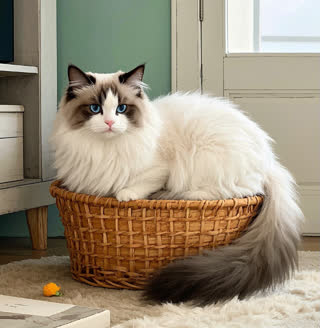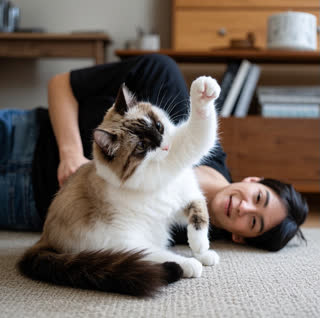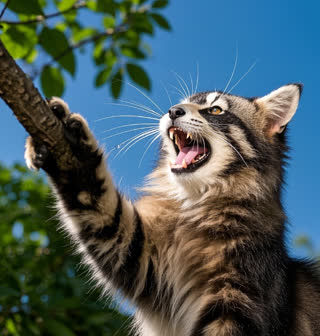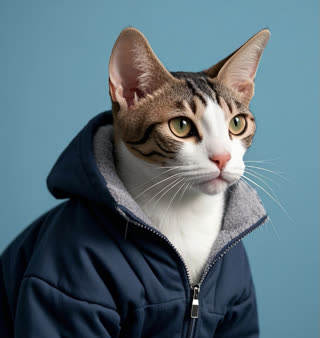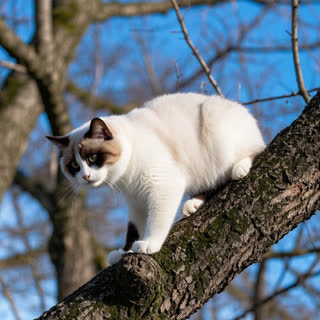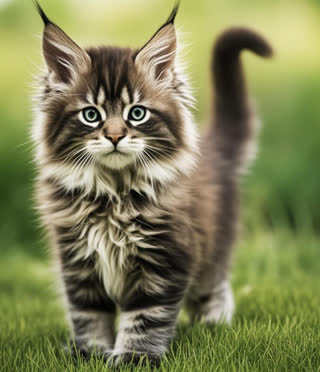1. The Stark Difference in Lifespan
2. Key Factors Influencing Lifespan
a. Environmental Safety
Indoor Living: Indoor environments protect Ragdolls from dangers like cars, dogs, and toxic plants. They also avoid extreme temperatures and pollution, which can strain their respiratory systems .
Outdoor Risks: Outdoor Ragdolls face higher risks of injuries from fights with other animals or falls from heights. For instance, a survey by Fluffy Tamer revealed that 40% of outdoor cat deaths are due to accidents .
b. Disease Prevention
Indoor Advantage: Indoor Ragdolls are less exposed to parasites like fleas and ticks, which transmit diseases such as Lyme disease. Regular veterinary care, including vaccinations and parasite control, further reduces health risks .
Outdoor Vulnerabilities: Outdoor cats are 3 times more likely to contract FeLV or Feline Immunodeficiency Virus (FIV) through bites from infected animals .
c. Nutrition and Exercise
Indoor Care: Indoor Ragdolls benefit from controlled diets, preventing obesity—a common issue in sedentary cats. Purina recommends feeding high-quality, portion-controlled meals to maintain a healthy weight .
Outdoor Challenges: Outdoor cats may struggle to find balanced nutrition, leading to malnutrition or overeating. Their active lifestyles can also increase calorie needs, requiring careful dietary monitoring .
3. Health Risks Specific to Ragdolls
Hypertrophic Cardiomyopathy (HCM): A heart disease causing thickened heart walls, which can lead to heart failure. Regular echocardiograms are essential for early detection .
Polycystic Kidney Disease (PKD): Inherited cysts in the kidneys, which can progress to kidney failure. Genetic testing can identify carriers .
Obesity: Ragdolls gain weight easily, increasing the risk of diabetes and joint issues. Indoor cats require interactive toys and playtime to stay active .
4. Optimizing Indoor Living for Longevity
Environmental Enrichment: Provide scratching posts, climbing trees, and puzzle feeders to mimic natural behaviors .
Regular Veterinary Care: Schedule annual checkups, dental cleanings, and blood work to catch health issues early .
Mental Stimulation: Use toys like laser pointers or treat-dispensing balls to prevent boredom and reduce stress .
5. Balancing Outdoor Access Safely
Supervised Outings: Use leashes or enclosed “catios” to limit exposure to hazards .
Parasite Control: Apply monthly flea and tick preventives to guard against diseases .
Microchipping: Ensure your cat is microchipped to increase chances of recovery if lost .
6. Expert Recommendations
Dr. Sarah Miller, Veterinarian: “Indoor Ragdolls thrive with a structured routine, including playtime and mental challenges. Avoiding outdoor risks is the single best way to extend their lifespan.”
AVMA Guidelines: The American Veterinary Medical Association (AVMA) advises keeping cats indoors to prevent injuries and diseases .
7. Real-Life Examples
Case Study 1: A Ragdoll named Luna lived indoors for 19 years with a diet rich in omega-3 fatty acids and regular exercise.
Case Study 2: Outdoor Ragdoll Max developed FeLV at age 5, requiring costly treatment and reducing his lifespan to 8 years.

